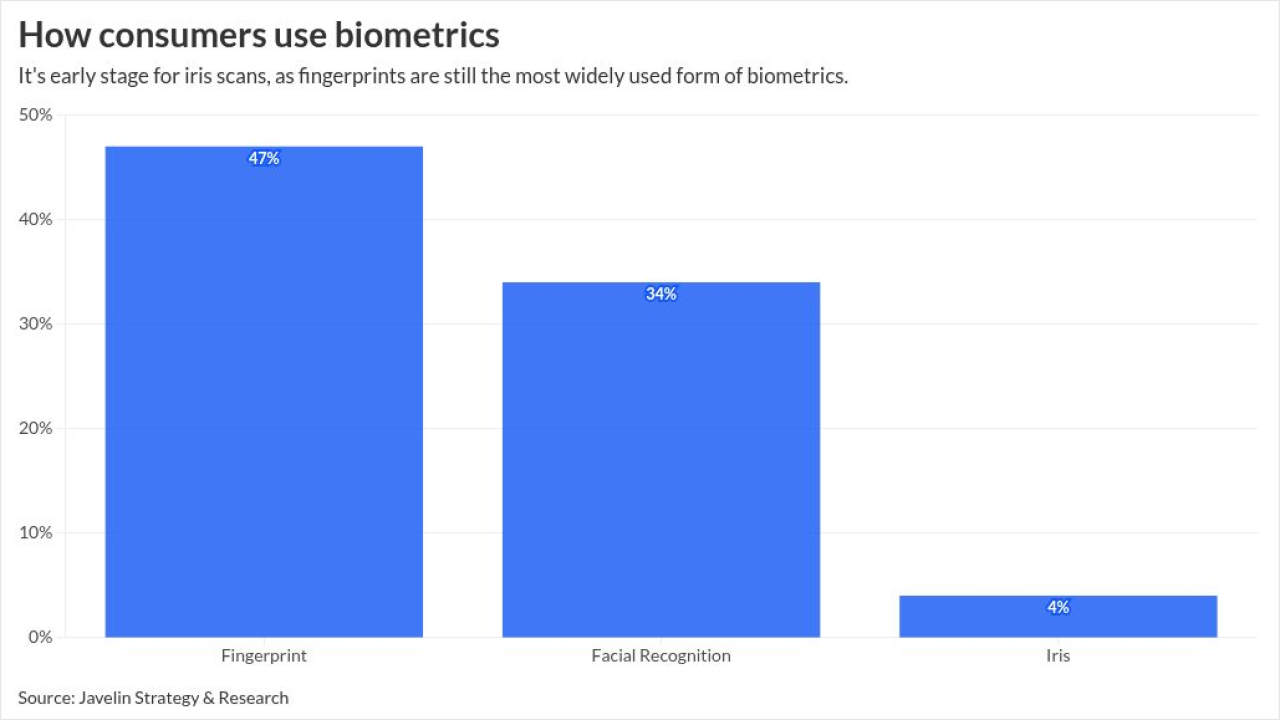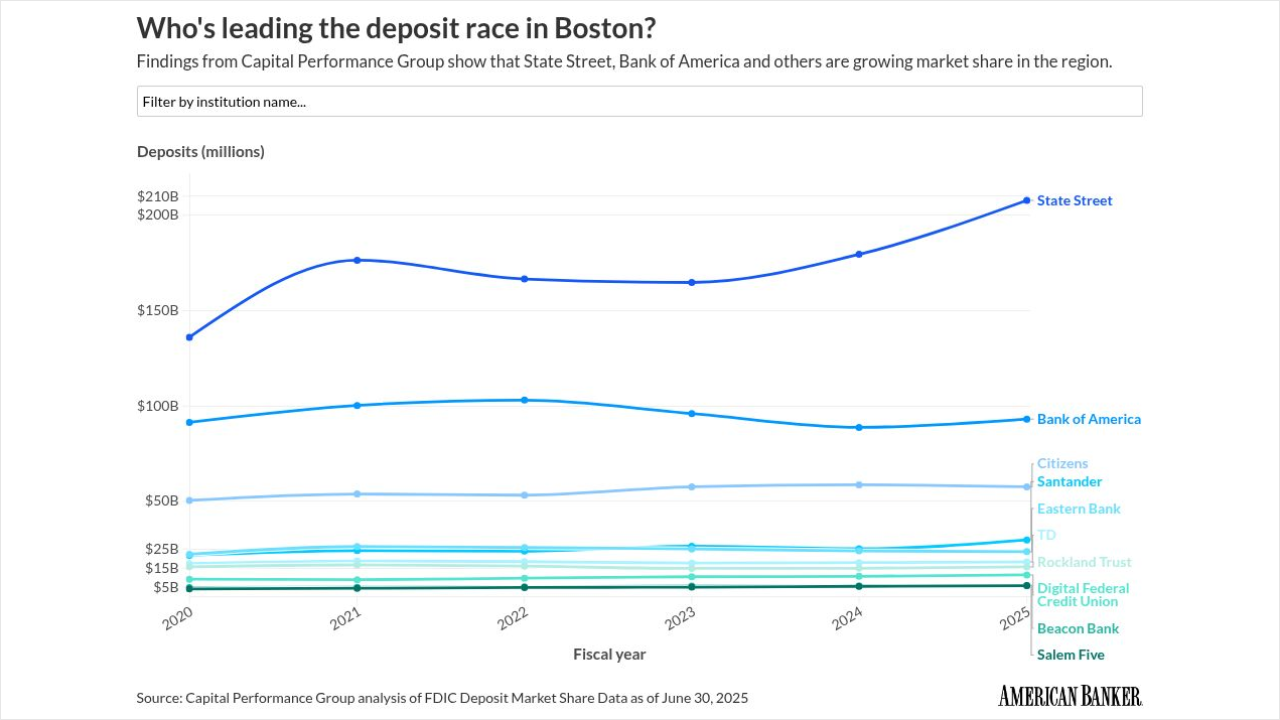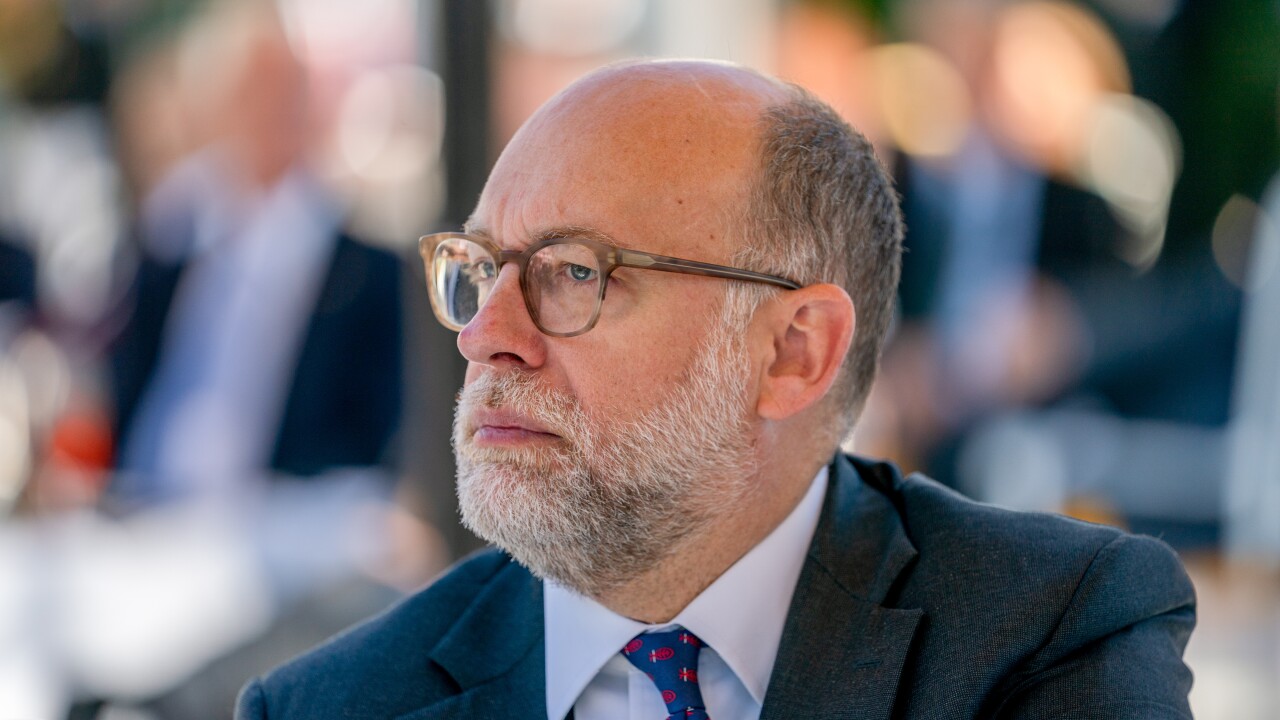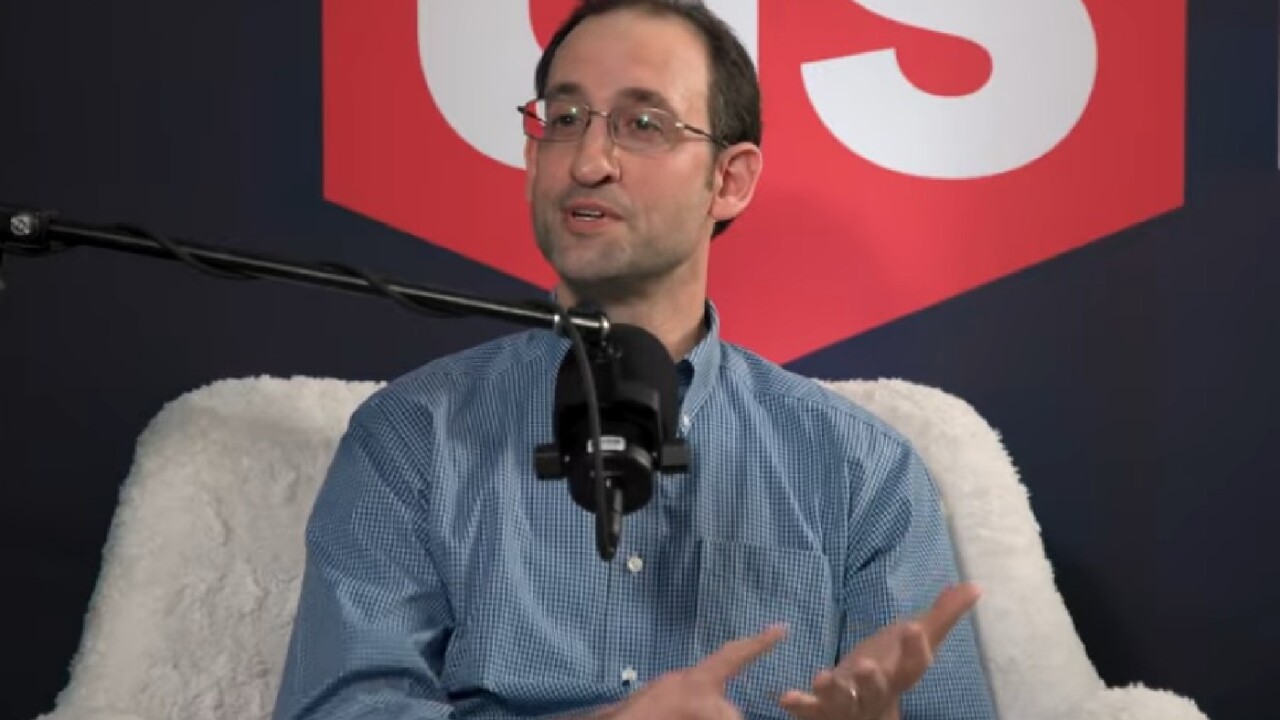A sudden shift in the credit cycle has forced members of the American Banker's Analysts Roundtable to take a more selective posture as yearend approaches.
Although they expressed doubt bad loans will depress earnings, the analysts said in a discussion Nov. 30 that loan growth and revenues could suffer in the year ahead
Participants in the quarterly session included Robert Albertson of Goldman Sachs & Co., Tom Brown of Donaldson, Lufkin & Jenrette, Felice Gelman of Keefe Managers Inc., and Dennis Shea of Morgan Stanley & Co.
Although their firms' advisory roles in the deal prevented Mr. Albertson and Mr. Shea from publicly taking sides in the bidding war for First Interstate Bancorp, the issues raised by the deal produced some lively debate.
Technology was another point of contention. The analysts agreed that banks must participate in home banking, but disagreed over whether their choices in that area would have an immediate effect on their stock valuations.
* * *
AB: What stocks do you like, and why?
ALBERTSON: No. 1 one is still Citicorp. It's darn near 70% in non-U.S. revenues. No. 2 is a group of sophisticated marketers that don't get bogged down in cyclical trends. Those would be Bank One, Norwest, NationsBank, and others.
We also have one other that we recently raised our profile on that we think is the only turnaround story out there, and that is Bankers Trust. We're now quite comfortable that the management of the company is reverting back to relationship management. That doesn't happen over night. But they still have probably the most sophisticated product base available for risk management.
BROWN: Since we were last together, the consumer finance stocks that are not directly banks - the credit card banks and automobile finance stocks - have been very hard hit, and my feeling is the opportunity has been created in the card companies.
The greatest values I see today in the broadly defined financial services sector are the four credit card specialists, with Capital One clearly being my favorite.
The companies that in 1995 announced megadeals, like First Union, are going to show up with disappointing earnings. The companies that announced great deals - like the Wells Fargo and First Interstate combination - Wells Fargo is going to have a strong year. And the companies that announced great changes in their business, like Keycorp are going to have a great year.
I also like Signet and First Bank System.
SHEA: I like companies that are doing something different that is not recognized yet in the value. The main companies I like now are Mellon, No. 1 - a fascinating company with north of 50% of revenue coming from fees, a large part of that is trust, investment management, and processing activity. Bank of New York has been a longtime favorite that would be my No 2. Again, here's a company with a significant cost advantage in all the businesses in which it competes that is consolidating many of its processing businesses.
No. 3 would be a little bank, Star Banc, in Cincinnati. You're going to see a radically different mix shift there that's going to push the margin quite high.
I like Keycorp a lot. I don't think its getting the respect it deserves. People are remembering two years ago what was looked at as not a very successful merger. But you have to look at what they're doing right now, particularly in how they are accessing and trying to leverage their customer base.
And one of my longtime favorites is Sun Trust.
GELMAN: Last time I talked about Citicorp, which we've liked and continue to like. Citicorp, although it's the largest card issuer among banks and the largest card issuer over all, has not been growing extremely rapidly. So the numbers you see in terms of losses and delinquencies are the numbers you'll get.
Bank of New York is probably the most undervalued of the large banks. It's always been a company that's been great on the expense side and a low- cost provider. And we haven't really seen the power of the acquisitions they've made yet.
They're going to earn at least $5. And for people who are chickens, you can buy the Bank of New York warrants. Normally you pay a 5% to 6% premium for a one- or two-month call options. Bank of New York warrants are a call option for three years, and it's a 10% premium so you're not exactly giving the store away in order to own a great growth stock.
There are three separate pieces of good news for the thrift industry. First, we know with a reasonable degree of certainty what it will cost thrifts to extract themselves from the Savings Association Insurance Fund. We know they will be able to shed the disparity in deposit insurance premiums and will be on the same footing as the banks. And third, an accounting holiday courtesy of the Financial Accounting Standards Board will enable thrifts to straighten out their investment portfolios.
In Long Island Savings Bank, you've got a stock that's trading at $25 and has a $20 book value. You also have a goodwill claim that is at least equal to their book value. Management is doing a very good job continuing to grow but not making any foolish bets.
The last one I'd mention would be Great Western. Wells Fargo's bid for First Insterstate created the opportunity for us to discover that, yes, there are other banks that want to be in the California market, and only one of those banks can possibly buy First Interstate. We know there are at least two others that want to be in California, and Great Western is the next largest market share which could potentially be available.
ALBERTSON: I think Citicorp stock has the most upside. This is a bank with 10 business lines as recently as six years ago, and its now down to three: consumer globally, emerging markets local banking, and multinational corporate. They're very defined businesses that you can trace back 10, 15, 20 years, and with the exception of consumer see an almost unbelievable consistency, so we think that's going to be the winner in almost any environment.
BROWN: I'll give you that Citicorp could be a great stock and that they've shed certain lines of business. But I'm not going to give you all that. Talking about global consumer as a line of business and saying they got out of branch banking, I think that's kind of a stretch.
ALBERTSON: Domestic branch banking, of course. But I mean they're not trying to build into new states, and their U.S. branch network is no longer a major one relative to competitors.
BROWN: I'm just saying the three lines of business that they're in, when you say global consumer, that is a huge line of business.
ALBERTSON: Oh, it's big - but it's small. It's small in the sense that all the markets they're in are basically very minor shares. We talk about a bank in the Northeast with a 19% share, and we don't seem to sweat the fact that that's a big share and they might not be able to grow it much. Citicorp in any of its major consumer markets around the world is almost consistently under 5% and usually under 3%.
BROWN: I think Citi has gone from a market-share-oriented company in the 1980s, to focusing in on just profitable market share. And we're still trying to get the bank managements to understand that. I don't care that you have 20% market share, because half of that's unprofitable. Once they understand customer profitability they'll focus on just a target market.
AB: With consumer delinquencies on the rise, how do you decide which stocks to stay in and which to avoid?
BROWN: I would be careful not to equate growth of the portfolio with potential problems. Mellon didn't have to be the fastest grower in the portfolio to have a disaster going. Norwest hasn't been the fastest grower and it had problems. The companies that have demonstrated problems in their portfolio in 1995 have not been the market share leaders.
GELMAN: Some of the well-managed companies will not face a significant eanrings impact even as losses rise. Capital One's not a bad example. It spent $145 million in marketing in 1995. If Cap One sees losses rising and chooses to slow its growth, it has a fair amount of earnings cushion.
But at the same time there's no question that reported losses are going to rise and that's going to create concern among people who don't know the companies. The companies that grow slowly, they have no greater guarantees than companies that grow fast that they won't have big credit problems. You may be growing slowly because your product is wrong.
ALBERTSON: I would not glue consumer borrowing momentum and credit card together too tightly. The card business is also driven substantially by transaction volume. History has shown us that the credit card business does not crash in a recession.
My concern is different. My concern is more of a bank consumer portfolio outlook and total loan growth outlook. Three years ago, when I tried to convince people that the consumer was going to borrow again, they said it was impossible: Look at the debt-to-income ratio. Now we have almost four years of growth, that ratio is seeking new heights, and all of a sudden I can't convince people it's time for it to stop.
I really do think we have a big cyclical slowdown here to deal with that is going to level out the revenue stream. Normally we have commercial volume coming in behind the consumer that carries on the cycle. And it doesn't look like we're getting that either.
BROWN: To me one of the most interesting aspects of 1996 is going to be a pickup on a quote from Bob Gillespie of Keycorp. which is that the last thing to get restructured in the consolidation of the banking industry is the balance sheet. I think what we're going to notice in 1996 is that more companies are going to decide that we don't have to hold these marginally profitable assets. They're going to get rid of those assets, they're going to take that excess capital, and it's going to be an aggressive year for share repurchase.
ALBERTSON: We're overestimating the share count. It's going to shrink, and shrink for some time to come, because the reinvestment rate of this industry is now over 10%, and the asset growth isn't 5%, if that.
The other piece of good news is that the valuation of this sector is on its historic average, and yet the profitability of this industry has dramatically improved. And I want to make a footnote on credit quality in consumer. The last time consumer delinquencies really started up was in 1983, and they continued up for eight years. and I defy you to go back to that period and find the loss burden in earnings.
AB: Let's talk about mergers. Are the banks that announced mergers this year going to deliver on their promises, and will the wave continue?
SHEA: I think we're in a long-wave merger cycle. Are we going to see a slowdown, or breather, of course. We just can't continue at the pace we've gone because so many banks you'd expect to be buying are already in the middle of buying. Some of these deals, I can't get specific - some of the deals are going to work and some won't. We don't have any great ability right now to sit here and tell you which ones. But in the deals that have worked in the past, one of the common themes is that very strong management team, so the decisions that took place weren't split right down the middle.
BROWN: Of course, in this First Interstate-First Bank System-Wells Fargo battle, the one that splits down the middle is First Bank System going with First Interstate. And clearly the easiest management transition would be Wells Fargo going with First Interstate.
GELMAN: I have to agree with you. Typically when you multiply the management in half you divide the returns in half. And there has been plenty of evidence of that. I think the one big deal where the acquired company has substantial managing responsibility, where I don't think that's going to be the case, is First Union/First Fidelity, just because of who's in charge. I don't think its possible that anybody can be a better consolidator of banks than (First Fidelity chief executive) Tony Terracciano.
ALBERTSON: Since I can barely talk about any of this topic name specific, I'd like to throw some food-for-thought points out. One, nobody's missed a cost save yet - except one maybe out of 30 deals. Two, if you look at the stock performance of buyers in acquisitions over the last 10 or 15 years, within 12 to 18 months the buyer by and large outperforms the group median by a substantial amount. Third, I think we're seeing two big dynamic changes in how mergers are going to take place in banks.
The first thing we've see this year is a list of CEOs who said "yes," that a year ago probably none of us would have thought would sell. And that really should broaden your horizon as to who can sell and who can buy.
The other dynamic is very subtle and almost counterintuitive; The smaller the buyer, within reason, the bigger the bang for a buck you can get out of any specific cost save on a target. It's interesting in this recent round of postulated bidders in a big West Coast story, if you rank those bidders inversely by asset size and look at who went into the fray, you'll see my point.
GELMAN: We did see that with First Chicago as well. If you had said to me last year that First Chicago would be bought by NBD, I would not have given that a lot of credibility.
SHEA: There's one other side to it also. While some banks have not missed cost savings targets they've radically missed their revenue targets. So while we've seen a number of companies get the cost savings or efficiency ratio, the companies lost revenues.
AB: Does the hostile bid for First Interstate open the door for other transactions of this type?
ALBERTSON: First of all you have to wait and see if hostility works or not. The last time it did, it was a one-time event. I don't think you can draw any conclusions yet. I think it will still be a rare event. And I find more and more willing sellers by the hour out there.
SHEA: If you go back to the one big successful hostile deal we had (Bank of New York's purchase of Irving Bank Corp.), it was a 13-month fight, and a lot people seem to forget that Irving won the proxy battle. Irving prevailed. They caved in afterwards, when Bank of New York kicked in another $5. They tried to find a white knight, they could not. Even after all that, after compelling economics, after a bid by a bank that nobody could match, the shareholders turned it down.
AB: Do you think that would happen again today?
SHEA: I didn't think it would happen then. It was one of the biggest shocks I ever had in my career.
GELMAN: That's why the competitive bidding for First Interstate has taken the peculiar turn it has. The competing bids have turned into an analyst's nightmare of applying numbers and dueling assumptions. You start with something which seems obvious - that the in-market buyer with the stronger currency can create the most value, and by a compelling amount. And the aim of the battle of the dueling assumptions is to try to demonstrate that that amount is not a mile, it's a yard. If it's a yard, institutional investors may not be willing to take the heat to go against the management of First Interstate.
BROWN: But eventually, the markets are rational. And people say, in a company where there's 45% overlap why wouldn't there be significantly more value? The combined number of branches of First Interstate in the three states where First Bank System operates is seven. There isn't a lot of cost saving from consolidating seven branches.
ALBERTSON: I would have to conceptually disagree with the branch as a meaningful amount of the cost save. Physical overlap matters, but I would go back to the Chemical-Manufacturers Hanover merger and look at the cost- save breakdown and how little the branch overlap per se was. This is all a back-office game.
BROWN: No, Robert. First Interstate operates 430 branches. With this deal they would close 400.
ALBERTSON: I'm not trying to talk about this specific deal and I can't. But I think investors do not understand or appreciate how much of the costs of a bank are in its back office.
And by the way, if you close a branch across the street, just as if you close a gasoline station across the street from another, you'd have to bring the attendants over to the other station if you wanted to maintain volume.
There is just way too much emphasis on branch space and not enough on the ability to take very broad geography and plug everyone's branch into one operating system. The cost saving is still huge.
SHEA: I think the bigger issue here for the industry is that the market and analysts are willing to embrace that there are significant cost savings potentials between companies in the industry without significant overlap. That opens mergers up to an entirely new area.
AB: If we see women weakness in bank stocks, would that take away currency from some predators and maybe take a little gas out of this?
GELMAN: I think there'd still be deals, but I think they might be deals that investors don't make money on. They would be mergers or low premium deals. Just because the stock price isn't there, I think the exigencies that are forcing this consolidation don't go away.
SHEA: Many of these companies are looking at analysts' recommendations. Whose stock do I want to own for three, four, five years? In addition, they're looking at a shot at a double dip.
We're past the point where every seller's opinion of where their stock should trade in a deal was 50% above market. Sellers are willing to go at a modest premiums, at market or below market.
AB: Do you see enough progress in electronic banking that it's beginning to reflect in your valuations? Who are the leaders in technology?
ALBERTSON: I think that delivery system focus is being taken to an extreme. It's not all that's going to count in the long run. It took a decade for the automated teller machine to evolve to major usage - and that was a much simpler thing for the consumer to deal with at the time that nobody got a leg up on anybody.
In terms of technology, the people who got hurt are the people who put their heads in the sand and said, "I just won't even consider it," and those who overspent to be first.
It's going to vary by bank. You talk about somebody making money by virtual banking, I just can't figure out how they're going to do it.
BROWN: I think what Wells Fargo has done this year is the most important change in the industry. It's exactly the reason why they chose to go after First Interstate. They had, at year end 1994, 572 traditional branches, 39 400-square-foot supermarket locations, and 22 just-opened, 25-square-foot banking centers with one employee each.
By the end of 1997 they may have cut the total traditional branches in half, the in-store locations will be up to 200, the banking centers will be up to 500. The distribution system will have been increased from 633 locations to 1,000, but the square footage that they operate and the operating cost will have gone down dramatically. And the sales from the supermarket locations are more than three times per employee what they're running at the traditional branches.
They're taking this new economic model for retail banking and applying it to First Interstate's franchise, and that's how they can afford to pay three times book value for the company.
GELMAN: I think bankers and investors totally underestimate on-line banking. The introduction of financial services through Quicken - think about it, you have an installed base of eight million people who are already using this product. They upgrade their product, and what's the first thing they see when the program comes up on their screen. Six choices and two of them are on-line banking and on-line bill paying.
It's not a question of saying, "Would you like to have this." All the banks that are offering this through Quicken are at least introductorily offering it for free, so there's no price barrier.
So you start off, you sign up. And once they sign up, people do not quit. And you do not change you bank either.
Now Intuit has announced that through an acquisition and a joint venture they're going to be providing access to over 250 mutual funds on-line to the same users of the same program. What does that mean? It means that if you don't compete in that area you are going to start to lose control of your customer.





